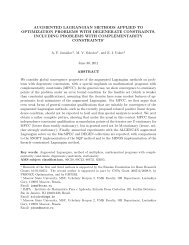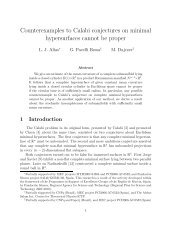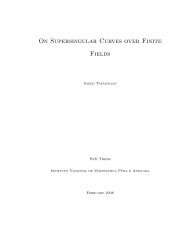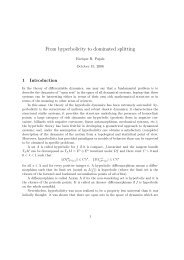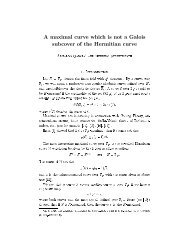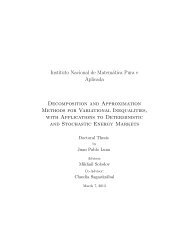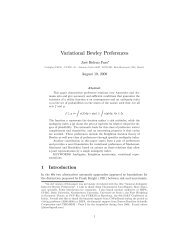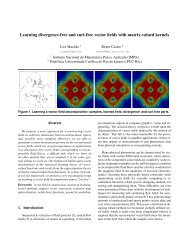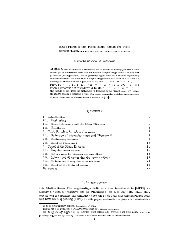a reduced model for internal waves interacting with submarine ...
a reduced model for internal waves interacting with submarine ...
a reduced model for internal waves interacting with submarine ...
You also want an ePaper? Increase the reach of your titles
YUMPU automatically turns print PDFs into web optimized ePapers that Google loves.
0.6<br />
0.5<br />
0.4<br />
0.3<br />
η<br />
0.2<br />
0.1<br />
0<br />
−0.1<br />
0 10 20 30 40 50 60<br />
ξ<br />
Figure 4.13: Pulse propagating over a synthetic periodic rapid-varying topography.<br />
Dotted line: numerical solution <strong>for</strong> the LCM using RK4 <strong>with</strong> N= 1024 <strong>for</strong><br />
t=35.3429, dashed line: initial condition, solid line: flat bottom exact solution.<br />
should be slightly decreased as predicted in Rosales and Papanicolaou [26]. But<br />
this change is only noticeable over very large distances.<br />
Example 4.7. Let us add the nonlinearity ingredient (α=0.005) to the previous<br />
example. We consider again the periodic rapidly-varying topography defined in<br />
Example 4.6, together <strong>with</strong> the same Gaussian shape of effective width L=4.8.<br />
There<strong>for</strong>e the ratio inhomogeneities/wavelength is kept at 0.0873. In Fig. 4.14 the<br />
numerical solution <strong>for</strong> t=35.3429 is depicted together <strong>with</strong> the exact solution <strong>for</strong><br />
the LFM and the initial condition. The other parameters areβ=0.0001,ρ 1 = 1,<br />
ρ 2<br />
= 2, N = 1024,∆ξ = 2l/N = 0.049087,∆t = ∆ξ = 0.049087. Again,<br />
the solution is very similar to that of the LFM. The wave is not modified by the<br />
rapidly-varying topography and no reflections are generated.<br />
80



